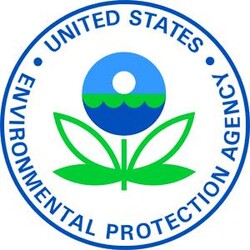[미국] EPA, 더 깨끗하고 안전한 식수 보장 위해 약 850만 달러 규모 연구 보조금 발표
 미국 환경보호청(EPA)은 병원균 발생 및 농도, 소독 부산물, 음용수 송수체계 성장에 유리한 환경 조건 등에 대한 연구를 위해 4개 기관에 849만2천 달러의 보조금을 발표했다.
미국 환경보호청(EPA)은 병원균 발생 및 농도, 소독 부산물, 음용수 송수체계 성장에 유리한 환경 조건 등에 대한 연구를 위해 4개 기관에 849만2천 달러의 보조금을 발표했다.
크리스 프레이(Chris Frey) EPA 연구개발국 보조관리자는 "먹는물의 오염 물질을 감시하고 통제하기 위한 새로운 전략은 과학이 우리의 건강과 생태계 보호하는 데 도움이 될 것"이라며 "이번에 발표된 연구는 현재의 먹는 물 인프라를 개선하기 위한 혁신적인 과학 및 기술 솔루션을 위한 주요 정보를 제공할 것"이라고 말했다.
레지오넬라균(Legionella), 마이코박테리아(mycobacteria), 슈드모나스(Pseudomonas)과 같은 기회감염균(Opportunistic pathogens)은 음용수계에서 성장할 수 있으며 공중 보건에 잠재적인 위험을 초래할 수 있다. 이러한 미생물 병원균 및 기타 미생물 병원균의 발생은 또한 오염된 저장 시설 및 역류 및 저압 사고와 같은 물 분배 시스템의 다른 문제와 관련이 있다.
만약 처리되지 않은 상태로 두면 이러한 오염 사건은 위장 및 기타 수인성 질병의 발생으로 이어질 수 있다. 이러한 병원균을 제어하는 데 사용되는 소독제는 천연 유기물, 브롬화물 및 기타 오염물과 반응하여 소독제 부산물(DBPs)을 형성해 추가적인 문제를 일으킬 수 있으며, 이는 또한 인간의 건강에 해로울 가능성이 있다.
이번에 발표된 연구는 이러한 오염물질을 통제하는 방법에 대한 우리의 이해를 향상시키고 모든 미국인들이 더 깨끗한 식수를 확보할 수 있도록 물 인프라 관리 및 위험 완화 관행을 알리는 데 도움이 될 것이다.
EPA로부터 보조금을 지원 받는 4개 기관은 다음과 같다.
- 미네소타대학교(University of Minnesota): 미네소타대학교는기회감염균과 소독부산물에 대한 노출을 제한하기 위한 전략을 개발하고 경제적으로 불리한 토착 인구에게 서비스를 제공하는 알래스카 시골의 연구가 충분하지 않은 소규모 시스템을 포함해 미국 물 분배 시스템에서 기회감염균과 소독부산물 발생에 대한 새로운 데이터를 생성한다.
- 미시간주립대학교(Michigan State University): 미시간주립대학교는 미시간주 이스트 랜생의 기회감염균과 소독부산물 및 관련 건강 위험 상충의 발생을 더 잘 이해하고 예측한다. 프로젝트 결과는 미국 전역의 음용수 분배 시스템에서 더 나은 평가, 모니터링 및 위험 관리 전략을 지원할 것이다.
- 텍사스대학교(University of Texas): 텍사스대학교는 다양한 음용수 분배 시스템에 걸쳐 오염 물질에 대한 전국적인 연구를 수행하고 기회감염균과 소독부산물의 발생 패턴을 식별하는 데 도움을 준다. 연구는 건강 위험이 일반 수질 및 분배 시스템 요인과 어떻게 상관 관계가 있는지 입증하여 음용수로 인한 사람들의 위험을 줄일 수 있는 전략을 알려줄 것입니다.
- 조지아 테크 리서치(Georgia Tech Research Corporation): 조지아 테크 리서치는 먹는물 속 미생물군집(microbiome)을 모니터링하고 음용수 저장 및 분배 시스템의 기회감염균과 소독부산물의 위험을 관리한다. 이 프로젝트는 또한 적절한 건강 위험 개입을 알리기 위해 안전한 물의 가용성에 대한 병원균 및 DBP 영향을 평가할 것이다.
[원문보기]
EPA Awards Nearly $8.5M in Research Grants to Ensure Cleaner and Safer Drinking Water
Today, the U.S. Environmental Protection Agency (EPA) announced $8,492,000 in grant funding to four institutions for research on the occurrence and concentration of pathogens and disinfection by-products and the environmental conditions favorable to their growth in drinking water distribution systems.
“New strategies for monitoring and controlling contaminants in drinking water will help ensure that science underpins the protection of our health and our ecosystems,” said Chris Frey, Assistant Administrator for EPA’s Office of Research and Development. “The research funded today will provide key information for innovative scientific and technological solutions to improve current drinking water infrastructure.”
Opportunistic pathogens (OPs) such as Legionella, mycobacteria, and Pseudomonas can grow in drinking water systems and pose potential risks to public health. The occurrence of these and other microbial pathogens is also associated with contaminated storage facilities and other problems in water distribution systems such as backflow and low-pressure incidents. If left untreated, these contamination events can lead to outbreaks of gastrointestinal and other waterborne illnesses. The disinfectants used to control these pathogens can cause additional problems by reacting with natural organic matter, bromide, and other contaminants to form disinfectant by-products (DBPs), which also have the potential to be harmful to human health.
The research announced today will improve our understanding of how to control these contaminants and help inform water infrastructure management and risk-mitigation practices to ensure cleaner drinking water for all Americans.
The following institutions are receiving awards:
- University of Minnesota, Minneapolis, Minn., to develop strategies for limiting exposure to OPs and DBPs and generate new data on OP and DBP occurrences in U.S. water distribution systems, including understudied small systems in rural Alaska that serve economically disadvantaged native populations.
- Michigan State University, East Lansing, Mich., to better understand and predict occurrences of DBPs, OPs, and their associated health risk tradeoffs. Project outcomes will support better evaluation, monitoring, and risk management strategies in drinking water distribution systems across the U.S.
- University of Texas, Austin, Texas, to conduct a nationwide study of contaminants across a wide variety of drinking water distribution systems and help identify occurrence patterns of OPs and DBPs. Research will demonstrate how health risks are correlated with general water quality and distribution system factors to inform strategies that will reduce risks to people from drinking water.
- Georgia Tech Research Corporation, Atlanta, Ga., to monitor the drinking water microbiome and manage pathogen and DBP risks in drinking water storage and distribution systems. The project will also assess pathogen and DBP impact on the availability of safe water to inform appropriate health risk interventions.
[출처 = EPA(https://www.epa.gov/newsreleases/epa-awards-nearly-85m-research-grants-ensure-cleaner-and-safer-drinking-water) / 8월 15일]










































